- Yokohama-shi Top Page
- Municipal Government Information
- Policy and Initiatives
- Main Initiatives
- Local government exchange
- Friendship exchange with Showa Village, Gunma Prefecture
- Showa Village Friendship Exchange Project Konjac Potato Growth Diary 2023
Here's the text.
Showa Village Friendship Exchange Project Konjac Potato Growth Diary 2023
Last Updated January 17, 2024
Yokohama City has been cultivating and harvesting "konjac potatoes from Showa Village" in Yokohama Park since 2014. This event was held for the first time in a long time since 2019.
This year, in collaboration with Yokohama Municipal Motomachi Elementary School (Naka Ward) planted trees in Yokohama Park in cooperation with Yokohama City Greenery Association.
Showa Village, Gunma Prefecture, which is a friendly exchange local government in Yokohama City, has the largest production of konjac potatoes in Japan!
In this growth diary, we will update the photos of the growth of konjac potatoes from planting in Yokohama Park to harvesting, so please take a look.
The planting point is here (PDF: 208KB).
Cooking practice day (December 19)
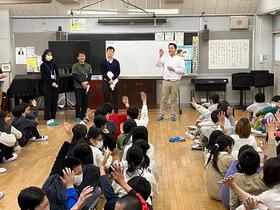
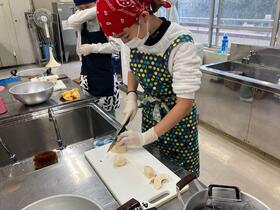
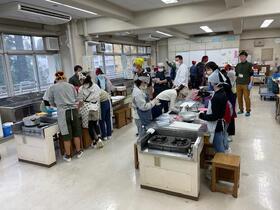
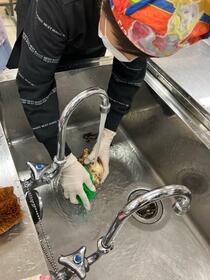
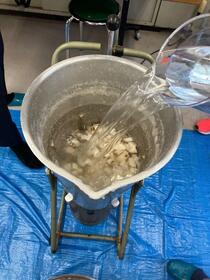
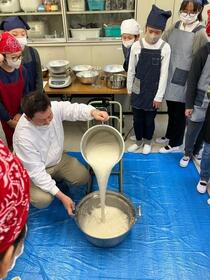
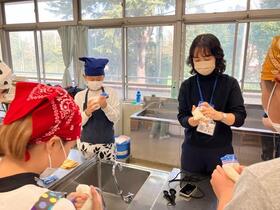
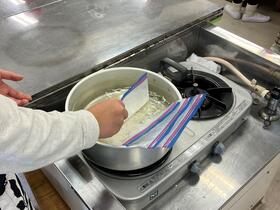
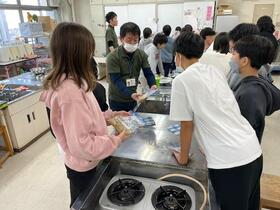
We practiced cooking in the home economics room using konjac potatoes harvested and dried the other day with a sixth grader at Motomachi Elementary School.
I made it while teaching a konjac manufacturing company in Showa-mura.
First, wash the konjac potato, drop the mud, cut it, and pour it in a mixer with lukewarm water. Next, divide the liquid konjac into a plastic bag with a zipper (250g) for each person (250g) and let it sleep for a while. After that, mix the calcium carbonate (coagulant) dissolved in water, put 10cc in a plastic bag, and rub it quickly and evenly and mix. After mixing, konjac is placed on the edge to form. Put the formed konjac in a pot with boiling water in a plastic bag and boil for 15 to 20 minutes. Take out the boiled konjac and remove the coarse heat. It can be stored in water for a few days. There were scenes where kitchen knives and fire were used, but together we were able to make delicious konjac while having fun and fun. Everyone was happily talking about what kind of food they would use when they brought them home.
Finally, everyone at Motomachi Elementary School sang the school song to thank you. It was a wonderful chorus that felt the weight of the 150th anniversary of the founding.
This year we resumed cultivation of konjac potatoes in Yokohama Park after a long absence, but thanks to this, we were able to practice cooking safely.
Through konjac potatoes, it became a business that allows you to know well about Showa Village, a friendly exchange local government with Yokohama City.
This is the end of this year's konjac diary. Thank you for watching until the end.
Cultivation start 156 days (November 22) Harvest date
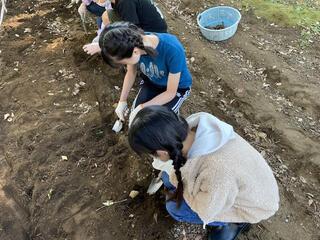
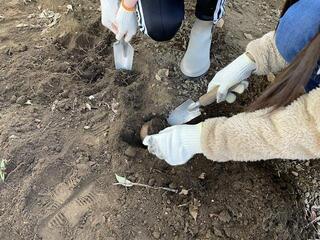
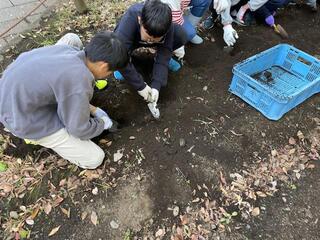
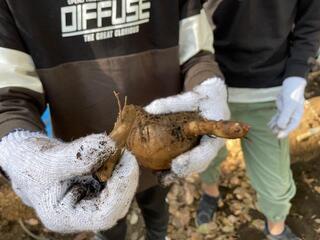
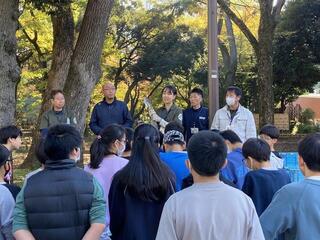
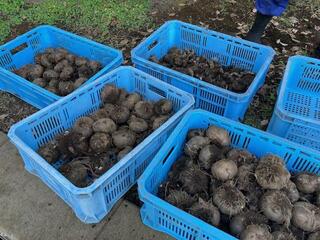
It was finally a long-awaited harvest day, and as with planting, a sixth grader at Motomachi Elementary School dig potatoes.
The weather was very good and it was a good harvest day. The dug konjac potato was getting bigger and bigger.
The children were crazy about searching for treasures and enjoying konjac potato digging.
The dug konjac potatoes are brought back to Showa Village once, washed and dried.
Next month, we plan to conduct cooking training at Motomachi Elementary School using dried konjac potatoes.
139th day of cultivation (November 5)
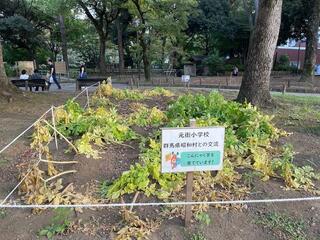
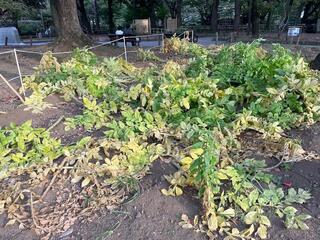
In autumn, all the leaves have fallen. At first glance, it seems to have died.
Please be assured that it is a signal that the growth of the potatoes has stopped and that the harvest is ready.
It's been less than three weeks until the harvest. Is it growing safely?
I'm really looking forward to it.
The 117th day of cultivation (October 14)
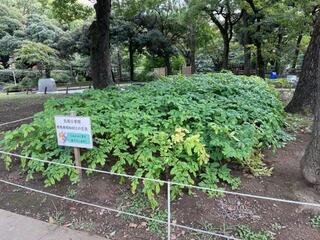
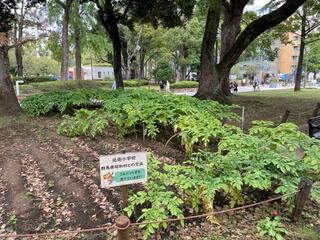
There are places where the leaves have fallen a little, but it looks the same as last month.
It's just over a month to harvest. There's only a few left.
I hope you will stay safe until the day of potato digging.
The 93rd day of cultivation (September 20)
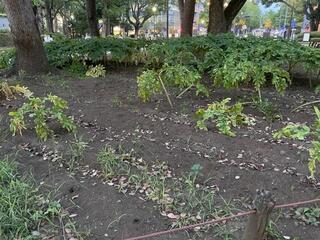
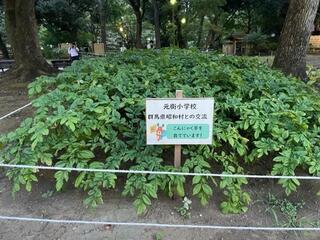
This year, the intense heat continued even in September, so the konjac potatoes of raw children became rotten and became a little lonely.
The dead part has been removed.
I'm growing up well in the first year. I hope you will continue to grow safely until the harvest.
63rd day of cultivation (August 21)
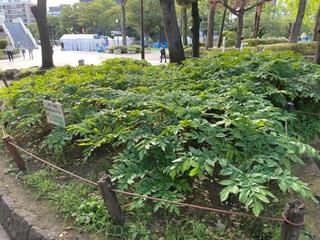
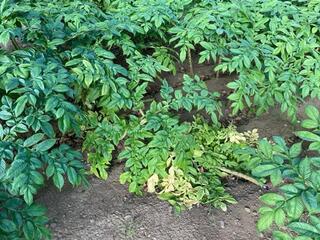
This year, there is little rain and terrible heat continues every day, but it is growing powerful.
Konjac fields are conspicuous in the park because the blue is shining even when viewed from a distance.
However, some of them had fallen from the base. Didn't we withstand the unusual temperature of this year?
After confirming with Showa Village, it seems that mold had grown at the base because the soil became hot and humid.
It is said that it will not be transmitted, but the dead part has been removed. I pray that the rest will grow well until the harvest.
50th day of cultivation (August 8)
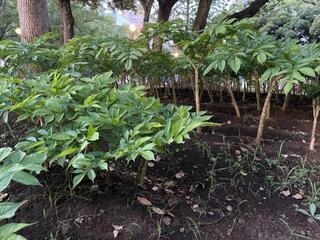
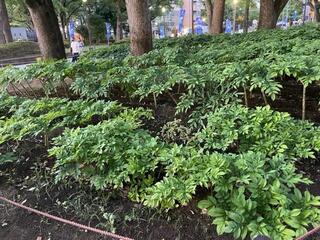
While the intense heat of more than 30 degrees every day, it is growing up well without losing. It's like a small forest.
The color of the leaves was also darker. The typhoon is approaching, but I hope you will endure it.
29th day of cultivation (July 18)
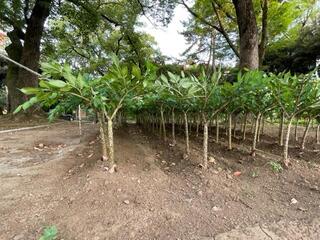
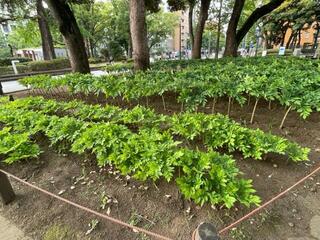
The leaves of konjac in the first year has also spread well. It's very powerful.
The rainy season will begin soon. In summer, it will grow in plenty of sunlight.
21st day of cultivation (July 10)
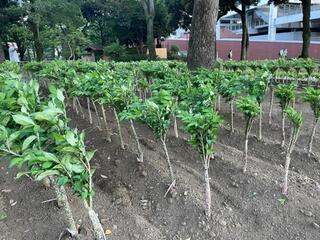
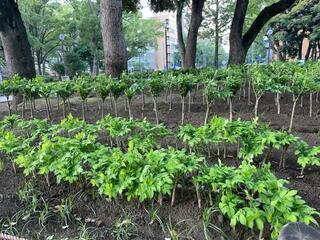
Leaves came out of all the potatoes. The scenery has changed significantly compared to last week.
It's growing steadily after absorbing rain in the rainy season. Leaves are likely to spread in a few days.
15th day of cultivation (July 4th)
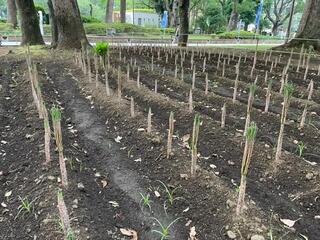
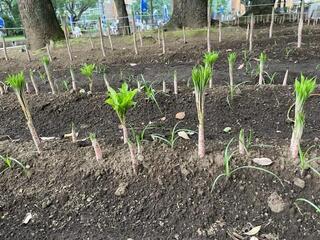
The leaves have come out! Did the rain the day before stimulating growth? It's cute because it stretches up above.
The left is a photo of konjac for the first year, and the right is a picture of Kigo. There are many things that live children have leaves.
There was a baseball game at the stadium on this day, so there was a lot of people, and some people stood up and looked at the field.
Eleventh day of cultivation (June 30)
It is growing quickly with the rain of the rainy season and the blessings of the sun. Buds are coming out of all the potatoes.
There were a lot of potatoes with the leaves that seemed to open. I'm looking forward to seeing the leaves in a few days.
The first day of planting cultivation of konjac potatoes (June 19)
Konjac potato
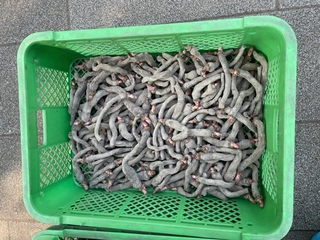
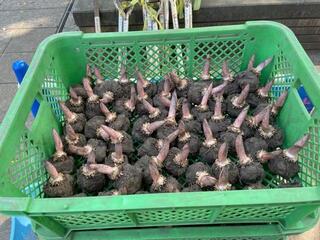
Left: Konjac potato repeats "planting and harvesting" about three times. This is the konjac potato baby "Kigo" (Kigo).
It is about 10 centimeters long.
Right: This is a first-year konjac potato. When planted this year, it will become a second-year konjac potato. It is about 7 cm in diameter.
In addition, if you plant a second grader, it will become a third grader konjac potato and will be large enough to be shipped. It is about 10 to 12 cm in diameter.
※Originally, it takes another year to ship, but this time it is omitted because there is no problem even for second graders to eat.
Planting
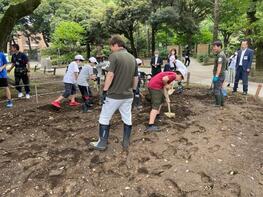
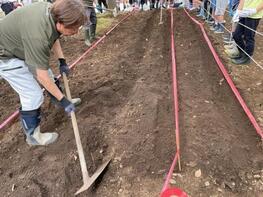
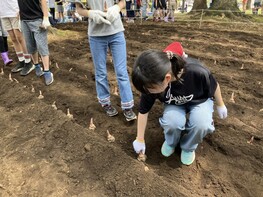
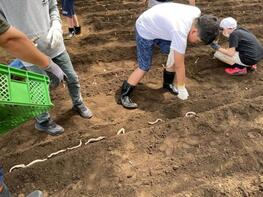
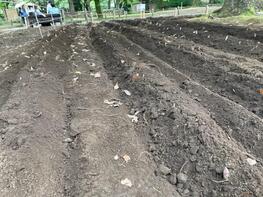
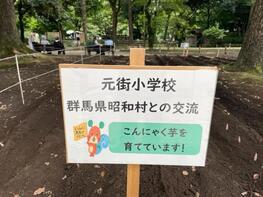
Upper left: I will plow the soil.
Nakagami: Make a ridge and make ridges.
Upper right: Plant konjac potatoes in equal intervals (two konjac potatoes) in the hollows of the ridges.
Lower left: We also plant raw children (kigo)
Nakashita: Cover the soil in a mountain shape so that the konjac potato cultivation area can be distinguished from the passage. At this time, fertilizer is also sowed.
Lower right: Planting is completed! It is completed by setting up a signboard (temporary) around the field. ※At a later date, everyone at Motomachi Elementary School will make a new sign!
In collaboration with Motomachi Elementary School, we started cultivating konjac potatoes in Yokohama Park. (Click here for an overview of planting (PDF: 797KB) (Yokohama City press release document))
On the day of planting, we were blessed with fine weather, and we were able to plant about 200 first-year konjac potatoes and about 100 kigo.
Please watch the growth together.
In order to open PDF files, you may need a separate PDF reader.
If you do not have it, you can download it free of charge from Adobe.
![]() To download Adobe Acrobat Reader DC
To download Adobe Acrobat Reader DC
For inquiries to this page
Policy Management Bureau, Regional Administration Division
Phone: 045-671-4239
Phone: 045-671-4239
Fax: 045-663-6561
Email address: ss-kouryu@city.yokohama.lg.jp
Page ID: 163-705-174







